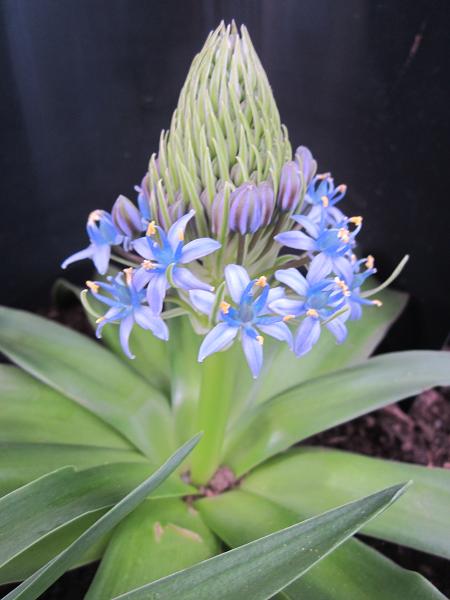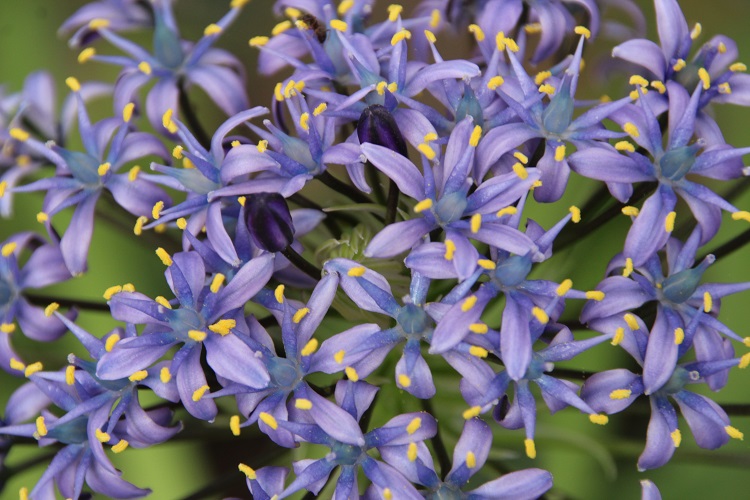 |
Scilla hughii is a close relative of Scilla peruviuana (and sometimes treated as a variety).
It is found only on the island of Marettimo, just off the coast of Italy. I am growing it in the greenhouse at the moment next to Scilla peruviana but it would probably do better in a dry sunny space in the garden (if I had one). Plants of the World online treats Scilla hughii as a synonym of Scilla peruviana. I can't see much distinction between the plants. I got my plant from Julian Sutton at Desirable Plants and he says he sees a difference in their vegetative behaviour. On the label he says: "Large winter growing bulb with big heads of lilac blue flowers in spring. 30cm. Hot sunny place, summer dormant." Paul Christian says in his 'Rare Plants' catalogue: "This makes a comparatively large bulb, for a ‘Scilla’ anyway. In late autumn or early spring, depending on climate, it produces a dense rosette of wide leaves which are almost conical when young. The bases of the leaves are tinged with purple. these leaves gradually flatten to lie more or less flat on the soil, becoming slightly ascending with age. (it differs in this way from the related S. peruviana which has narrow leaves with no purple tinge at the base). By March you can see, in the centre of the leaf rosette, a large conical bud spike appearing and in April or as late as May this elongates into a large, fat, open spike of 2 cm-wide flowers of deep indigo-blue with a contrasting blue ovary in the centre of each flower. Flowering lasts some weeks as blooms open progressively up the dense conical spike. The flowers stalk and the floral bracts are both tinged purple (again unlike peruviana in which they are green). Those floral bracts incidentally are far longer than those in peruviana. After pollination the 4 cm pedicels (which hold each flower), elongate to 10 cm making a tumbleweed type seed head in the manner of some south African bulbs. Endemic to Marettimo, one of the Aegadian islands off the coast of Sicily, this is a rarely seen, indeed a rarely mentioned. It is clearly a relative of Scilla peruviana however it is larger than that species in all of its parts. It is in fact even rarer than it seems, as almost all of the so-called “hughii” in cultivation are simply a dark form of peruviana and our original (Italian) source says that it is one of the most mis-named plants around. Ours is a genuine, verified stock of S. hughii." |
|
| 17th April 2014 | ||


